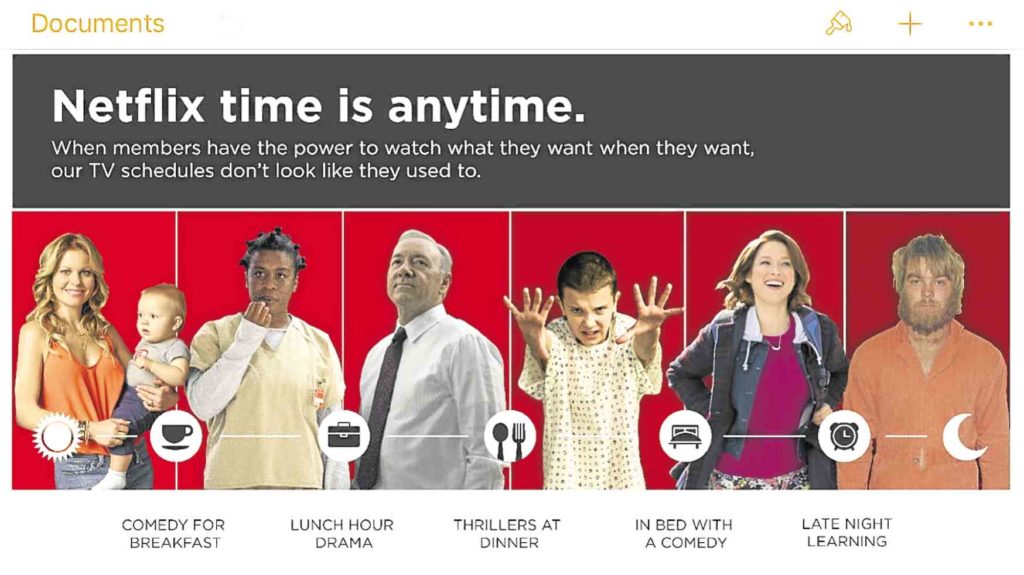Comedy for breakfast, drama for lunch, and thrillers for dinner.
Such is the “menu” of consumers who subscribe to the services of internet TV network Netflix, which in a recent study also found that allowing viewers full control over what they want to watch also challenged the concept of “primetime” TV.
“For years our lives had to fit around television, now it’s the other way around,” says Cindy Holland, Netflix vice president of original content. “We’ve given consumers control and it’s interesting to see the behaviors that emerge when viewers aren’t stuck to a schedule. And even more so to see that these patterns are replicated the world over.”
Six months’ worth of streaming data were analyzed by Netflix across the following countries: Argentina, Australia, Brazil, Canada, Colombia, Germany, Spain, France, United Kingdom, India, Italy, Japan, South Korea, Mexico, Malaysia, Netherlands, New Zealand, Philippines, Poland, Portugal, Singapore, and United States.
Peak viewing hours were identified based on weekday viewing, as well as the hours certain genres peaked in relation to the genre’s overall share of daily viewing. Where relevant, data were adjusted to account for timezones.
The study found that an audience spike of 34 percent for comedies such as “Unbreakable Kimmy Schmidt,” “Fuller House” and “Jane the Virgin” occurs worldwide at around 7 a.m.—roughly around the same time the morning news is aired.
Drama, apparently, goes well with lunch, as 47 percent of Netflix viewers (an increase of 5 percent compared to the rest of the day) globally devour, between noon and 2 p.m., shows like “House of Cards,” “Narcos,” and “Sherlock.”
At night, viewing of thrillers such as “Stranger Things” peak by 27 percent globally at around 9 p.m.—followed by a choice of lighter shows such as “Grace and Frankie” at around an hour after right before viewers hit the sack.
However, thanks to the platform’s mobility, the study found that Netflix is still consumed by its subscribers even during hours which aren’t usually considered viewing times: Such as the commute to and from work.
Even between 12 midnight and 6 a.m., viewers seem to find time for Netflix, as the study also found that 15 percent of subscribers are on the platform during those hours. Their midnight snack, so to speak, of choice? Documentaries.
Greg Peters, Netflix chief product officer, calls such changes in TV viewing habits a “transition to a new world of entertainment.”
“It turns out that the characteristics of internet experiences— putting the consumer in control, rapid innovation and constant quality improvements, and a highly personalized experiences—are the same things that consumers want in their entertainment experience,” says Peters.
And the customization isn’t just in how one chooses which shows to watch.
Netflix recently rolled out “Puss in Book,” an interactive kids’ show featuring the beloved Puss in Boots from the movie “Shrek,” which allows the viewer to choose the story’s direction—much like a choose-your-own-adventure book.
The company is set to roll out another similar show soon.
“We’re constantly trying to learn about our audiences around the world to make our service better—whether by adding even better content, or improving the product experience to satisfy what consumers want,” says Peters.
“We just hit 100 million [users] this year, and we want to continue to accelerate that rate of growth, and are working hard to build a service that will attract and satisfy the next 100 million users,” he adds.
